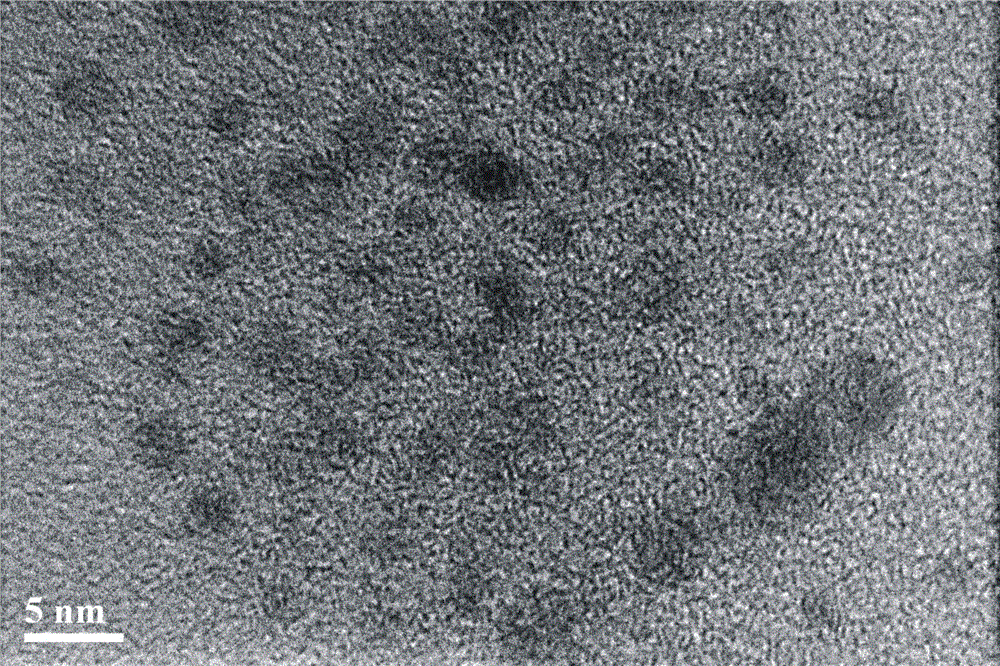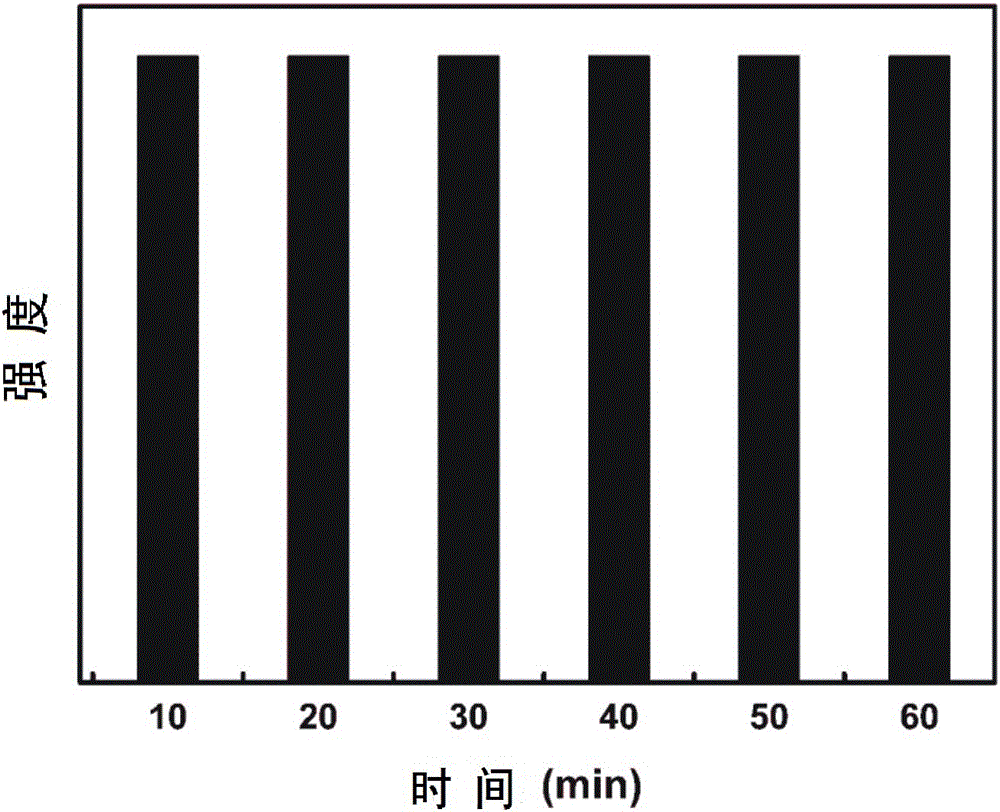Method for preparing water-soluble fluorescent carbon dots based on chitosan oligosaccharide-microwave assistance
A fluorescent carbon dot, microwave-assisted technology, applied in chemical instruments and methods, nano-carbon, nano-optics, etc., can solve the problems of uneven particle size distribution, complicated operation, poor stability, etc., and achieve stable fluorescence intensity and particle size distribution Uniform, good water solubility
- Summary
- Abstract
- Description
- Claims
- Application Information
AI Technical Summary
Problems solved by technology
Method used
Image
Examples
specific Embodiment approach 1
[0019] Specific embodiment 1: Dissolve 1.0 g of chitosan oligosaccharide in 15 mL of deionized water, add 0.2 mL of glacial acetic acid, and magnetically stir for 1 h to fully dissolve it. Put the above solution into a 50 mL polytetrafluoroethylene digestion tank, seal it and place it in a microwave digestion apparatus for digestion. The digestion conditions are: (1) temperature: 120°C, (2) power: 800 W, (3) Time: 6 min; after microwave reaction, cool to room temperature, take the solution for TEM characterization; see figure 1 , it can be seen from the figure that the surface layer of the obtained fluorescent carbon dots is covered with a layer of material to make them agglomerate together; the particle size of the carbon dots is uniform, and the particle size is ≤5 nm.
specific Embodiment approach 2
[0020] Specific embodiment 2: Dissolve 1.0 g of chitosan oligosaccharide in 15 mL of deionized water, add 0.2 mL of glacial acetic acid, and magnetically stir for 1 h to fully dissolve it. Put the above solution into a 50 mL polytetrafluoroethylene digestion tank, seal it and place it in a microwave digestion apparatus for digestion. The digestion conditions are: (1) temperature: 120°C, (2) power: 800 W, (3) Time: 6 min. After microwave reaction, cool down to room temperature; pour the obtained reaction solution into a 500 mL beaker, add 50 mL of ethanol for alcohol precipitation overnight, and separate by centrifugation, speed: 10000 r / min, time: 10 min; take the supernatant The liquid was characterized by transmission electron microscopy; for details, see figure 2 , the fluorescent carbon dots obtained after alcohol precipitation are evenly distributed, the particle size is less than 5 nm, and the dispersibility is good; no other substances are seen on the surface, indicat...
specific Embodiment approach 3
[0021] Specific embodiment 3: Dissolve 2.0 g of chitosan oligosaccharide in 20 mL of deionized water, add 0.4 mL of glacial acetic acid, and magnetically stir for 1 h to fully dissolve it; put the above solution into a 50 mL polytetrafluoroethylene digestion tank , sealed and placed in a microwave digestion apparatus for digestion, the digestion conditions are: (1) temperature: 120 °C, (2) power: 1000 W, (3) time: 6 min; after microwave reaction, cool to room temperature; Pour the obtained reaction solution into a 500 mL beaker, add 60 mL of ethanol for alcohol precipitation overnight, and separate by centrifugation at a speed of 10,000 r / min, time: 10 min; obtain the supernatant; : 80 ℃, drying time is 24 h, to obtain solid fluorescent carbon dot powder, stored in a brown transparent glass bottle until use. Take a small amount of prepared fluorescent carbon dot powder and irradiate it under a xenon lamp to measure its fluorescence stability. For details, see Figure 4 It can...
PUM
| Property | Measurement | Unit |
|---|---|---|
| particle diameter | aaaaa | aaaaa |
| particle diameter | aaaaa | aaaaa |
Abstract
Description
Claims
Application Information
 Login to View More
Login to View More - R&D
- Intellectual Property
- Life Sciences
- Materials
- Tech Scout
- Unparalleled Data Quality
- Higher Quality Content
- 60% Fewer Hallucinations
Browse by: Latest US Patents, China's latest patents, Technical Efficacy Thesaurus, Application Domain, Technology Topic, Popular Technical Reports.
© 2025 PatSnap. All rights reserved.Legal|Privacy policy|Modern Slavery Act Transparency Statement|Sitemap|About US| Contact US: help@patsnap.com



